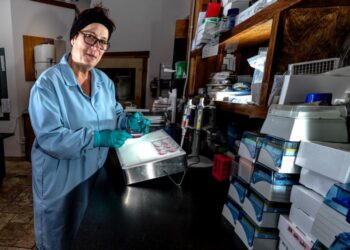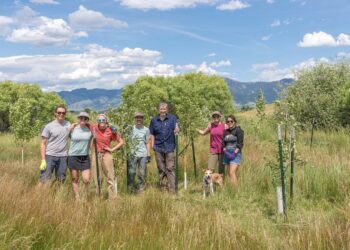EBS STAFF
The National Park Service transferred 112 Yellowstone bison to the Fort Peck Indian Reservation in Poplar, Montana, in early January, according to a Feb. 9 release.
The transfer—which included seven males, 53 females and 52 calves—is the single largest transfer to date under the park’s Bison Conservation Transfer Program and was the result of multiple regional and national partnerships.
NPS and the Animal and Plant Health Inspection Service has transferred 294 bison from Yellowstone National Park to the Assiniboine and Sioux tribes at Fort Peck since 2019. Approximately 170 of those bison have been further distributed to 23 tribes in 12 states in partnership with the InterTribal Buffalo Council.
The transfer is part of a larger effort being seen in the West to return Yellowstone bison to their native lands and the native tribes of those lands.
“We greatly appreciate the tremendous number of partners who have come together to make the Bison Conservation Transfer Program a success,” Superintendent Cam Sholly said. “It is important we continue to look for opportunities to build on the success of this program in order to move larger numbers of disease-free bison to Tribes across the country, while also achieving our future goal of eliminating shipments to slaughter.”
All of the animals in last month’s transfer completed phases I and II of brucellosis quarantine protocol at YNP and APHIS facilities and will finish phase III at Fort Peck as part of the program’s commitment to maintaining Montana’s brucellosis-free status for domestic livestock.
APHIS developed the quarantine protocols in October 2003 and validated them during 2005-2010, according to the release. Quarantine has three phases:
- Phase I – Managers capture bison in or near the park during winter. Bison considered suitable for quarantine based on initial negative tests for brucellosis are isolated in double-fenced quarantine pastures and tested every 30-45 days until all bison test negative for two consecutive testing periods.
- Phase II – Bison in these individual test groups undergo brucellosis testing by age and sex requirements described in the 2003 Brucellosis Eradication: Uniform Methods and Rules (APHIS 91–45–013) and are certified as brucellosis-free.
- Phase III – Managers can transfer bison to other fenced pastures. In the new location, brucellosis tests are conducted at six and 12 months to provide additional assurance. Managers keep these bison separate from other animals at least until the six-month test is completed. Thereafter, managers can release these bison on public or tribal lands for conservation and cultural purposes.















